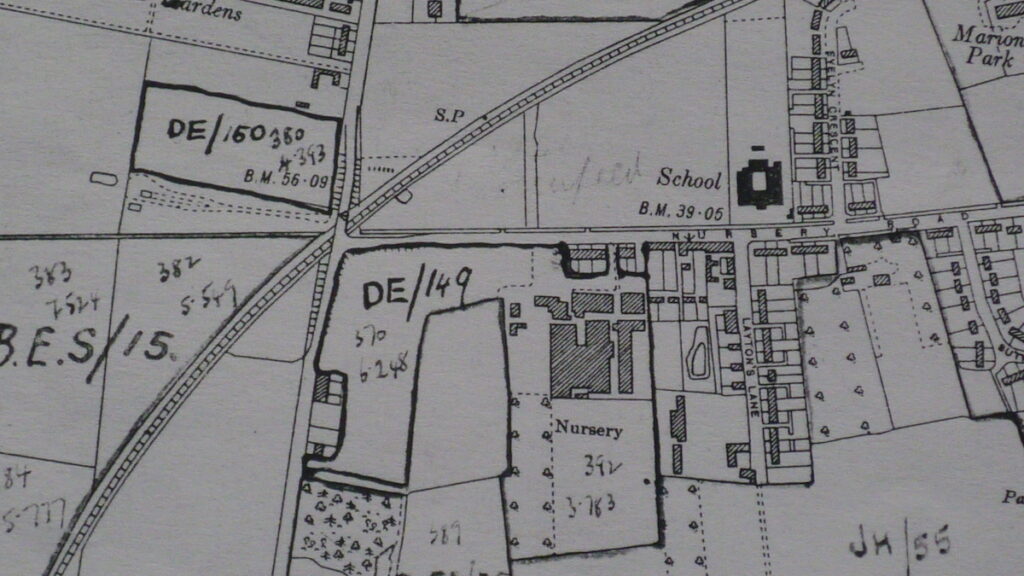By Robert Gant
Faced by the wartime prospect of serious food shortages, the Ministry of Agriculture and Fisheries launched the National Farm Survey (NFS) in Septem-ber 1941. This aimed to raise farming standards, intensify crop production and minimise food imports from overseas.
The National Archives (Kew) holds the records for 41 agricultural holdings (exceeding one acre) in the civil parish of Sunbury. Folders include the (then) confidential Agricultural Census Return completed by the occupier of each hold-ing on 4th June 1941 and inspector’s report on the quality and management of land.
Detailed statistics include acreages of crops, numbers of livestock and poultry, the agri-cultural workforce, working horses and available mechanisation. Additional returns for 16 holdings cover the specialised production of soft fruits and vegetables. Farm boundaries are added to a large-scale Ordnance Survey map. This shows ribbons of interwar housing fronting the main roads and a few private estates covering prime agricultural land.
Land was farmed intensively. Crops, grass and market gardens (nurseries) covered 980 acres. Included were: grassland (for mowing and perma-nent grazing) 436 acres; cereals (wheat and oats) 161 acres; fruit and vegetables 116 acres (11 acres under glass or frames); potatoes (earlies and main-crop) 69 acres; and fodder crops (root crops and brassicas) 37 acres. Agricultural holdings varied in size and specialisation. Eight holdings were less than 5 acres; 19 covered between 5 and 14 acres. Four farms exceeded 50 acres. There was variety in ownership, tenancy and lease-holding practices. One holding was already earmarked for house building.
Larger farms focused on dairying, cereal produc-tion and the field-scale production of cash crops. Nurseries and market gardens (many under 5 acres) on Nursery Road, Windmill Road and Vicarage Road, in contrast, specialised in outdoor vegetable production and cultivation under glass. Floriculture had already given way to food crops; only a few plots of daffodils, tulips and nursery stock re-mained.
London markets were equally important for live-stock production. Three dairy farms kept two-thirds of the 225 cattle. Eight piggeries, on small sites, raised most of the 473 pigs. Poultry production was more widespread. Thirteen specialist producers managed 3200 fowls, mainly for eggs. Several others kept a few pigs, ducks, geese and turkeys for domestic use and a supplementary income.
Intensive production sustained local employment. Statistics reveal a full-time paid workforce of 75 (50 males and 25 females) assisted by 24 casual (seasonal) workers (8 men and 16 women). Fifteen tractors of various makes were deployed on ten holdings. We know, too, that farms kept a total of 27 working horses.
Wartime circumstances challenged local farmers. There were serious shortages of: seasonal labour; imported feeding-stuffs for poultry; pig swill; and fertiliser for the longer-term improvement of sandy soils. Producers, nevertheless, intensified produc-tion. Inspectors graded one-third of holdings as ‘well managed’; only two as ‘poorly managed’. Supervised by the War Agriculture Executive Committee, in 1941 49 acres of pasture on eight holdings were ‘ploughed-up’ for cereals and brassi-cas. Problems remained. An inspector reported that every pane in glasshouses covering two acres of a market garden in Nursery Road had been shattered as the result of enemy bombing!
Farmers, smallholders and nurserymen involved in the NFS would be fazed by the transformation of the Sunbury landscape since 1945. Wartime ‘farmscape’ has now transitioned into ‘metropolitan edgeland’. And debates continue on greenbelt policy!

